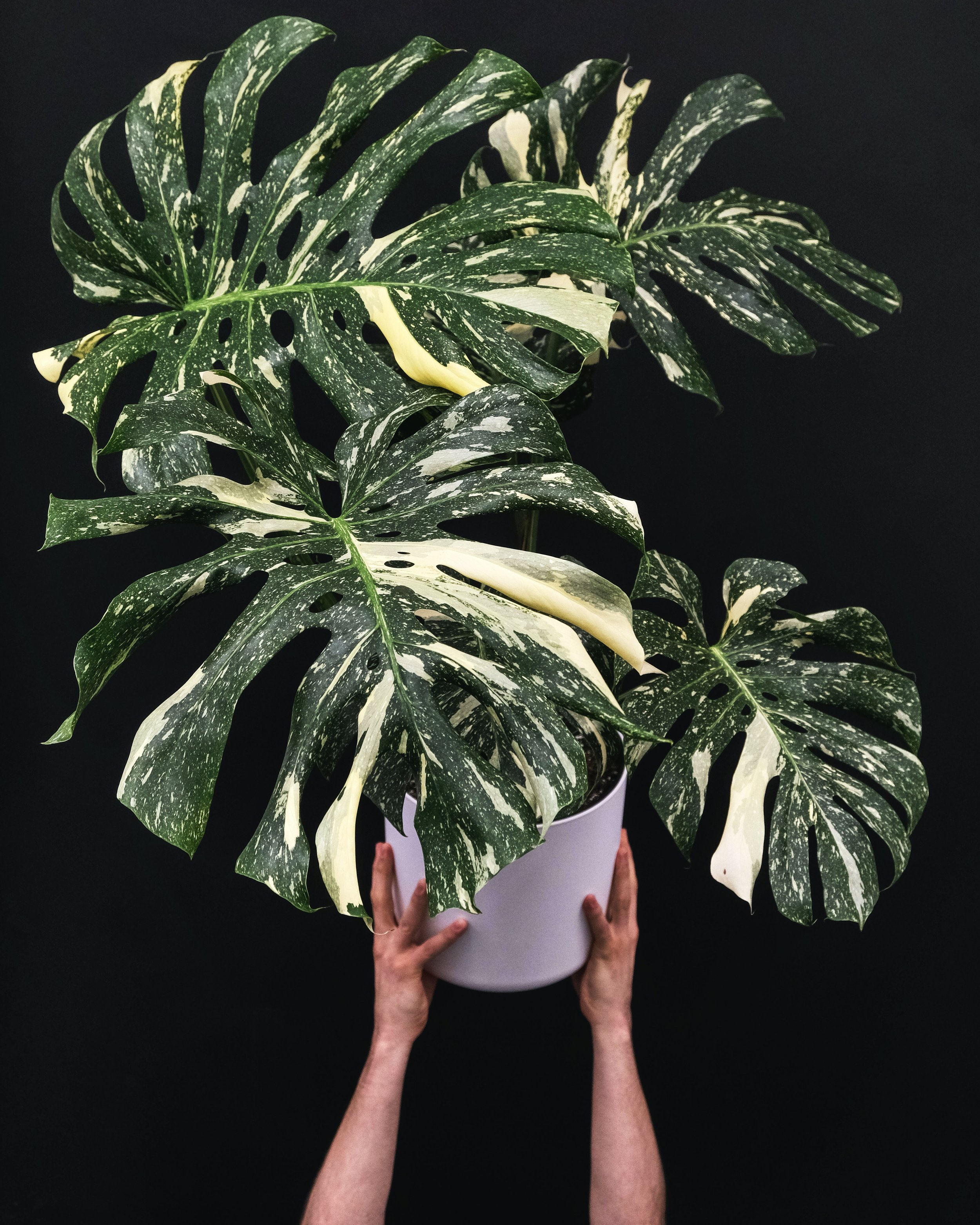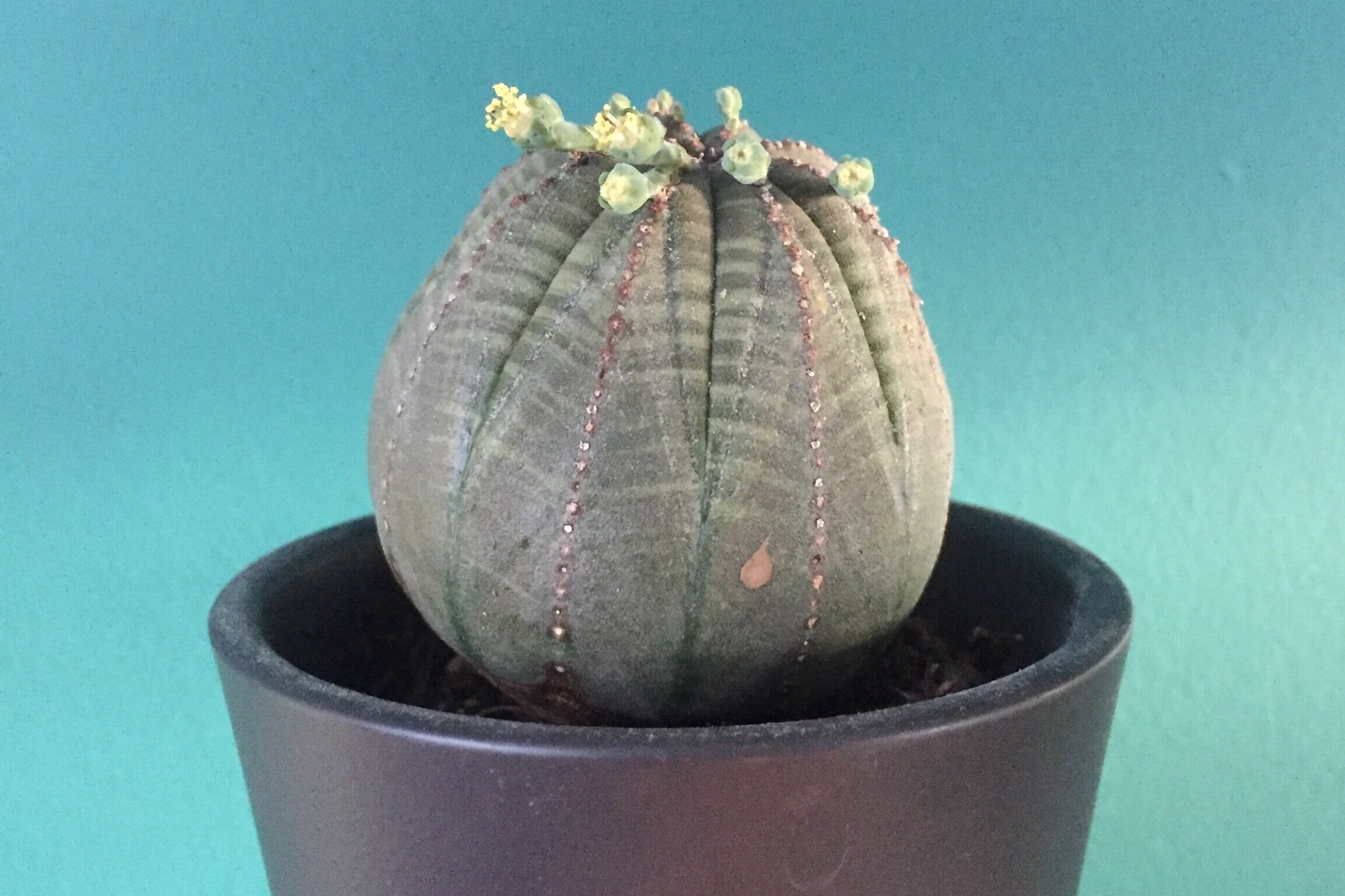We are fascinated by the recent rise in popularity of houseplant collecting, and in particular the phenomenon of rare houseplants changing hands for large sums of money. So we have turned to the expert mind of Jane Perrone, garden writer, podcast host and houseplant guru, to discover more on this topic.
Here Jane takes a fascinating look into the pertinent themes surrounding rare houseplants and the impact of seeking the desirable. (First published April 26, 2020)
I bought a rare plant this week. It wasn’t one of those specimens you’ll see lauded on Instagram emblazoned with #unicornplant, such as a Philodendron ‘Spiritus Sancti’ or a variegated fan palm: my budget won’t run to a four-figure houseplant bill.
No, my rare plant cost me £7. It’s a cultivar of the strawberry saxifrage, Saxifraga stolonifera, collected in Japan by Cedric Basset of French nursery Aoba, an Asian plant specialist. ‘Nezu Jinja’ is named
after a shrine in Tokyo, and has unusually large leaves for the species, traced in silver, as well as the habit of reproducing by means of stolons tipped with baby plants. It is only sold by one British nursery I know of, Growild, growildnursery.co.uk and they only had a few plants for sale.
So why can I pick up this rare houseplant for a few quid while similarly scarce rare aroids will be listed for hundreds of pounds?
Like all businesses, the houseplant industry is driven by supply and demand. While my ‘Nezu Jinja’ is rare - you won’t see one in B&Q or IKEA any time soon - demand is not high for this species, so the price remains modest.
Houseplant trends are driven by influencers with millions of YouTube subscribers or Instagram followers: when Jamie Song (@jamies_jungle on Instagram) or Kaylee Ellen shows off a rare philodendron or Monstera, every one of their fans starts scouring the internet to find out where they can lay their hands on this must-have plant. But such thirst cannot be met instantly: it can take months if not years to propagate enough plants to meet a surge of demand for a particular species or cultivar, especially slower-growing variegated ones. Some can be grown from seed, but this can be hard to source: others can only be propagated from plant material, either in traditional manner or via tissue culture, but again, the source material can be scarce and expensive.
Take the Chinese money plant, Pilea peperomioides: this plant has been grown and passed around among indoor plant enthusiasts for decades, especially in Scandinavia, but it was more or less unknown to the houseplant industry.
Pilea peperomioides - photo by Janine Meuche on Unsplash
Three years ago, when I made an episode of my podcast On The Ledge about the Chinese money plant phenomenon, I spoke to listeners who were so desperate to get hold of one that they were prepared to shell out $50 for a tiny specimen. Pilea peperomioides had exploded onto social media and everyone wanted some of those coinlike leaves on their shelf. Growers scrambled to get hold of enough plant material to begin mass propagation, and now in 2020 this once-rare plant is sold by the million and costs no more than a few pounds to buy.
So my message for anyone lusting after a highly desirable aroid is this: wait. The ‘gold rush’ for particular plants can have a positive effect for those who are patient: prices will come down over a period of time as growers respond to plant trends. We are certainly starting to see a drop in the cost of some of the desirable aroids such as the swiss cheese plant cultivar ‘Thai Constellation’.
For some, though, much of the value of owning a sought-after, rare plant is being able to show it off on social media safe in the knowledge that you are a member of an elite club of #unicornplant owners. This may seem harmless enough: if you have a few hundred pounds to spend on a single plant, that’s your prerogative. However, there is a darker underbelly to the rare plant trade: illegally collecting certain plants from their wild habitats rather than taking the time, effort and money to propagate is a real issue. Even plants that are very common in cultivation are dying out in the wild: there are a range of causes, but poaching of plants such as Euphorbia obesa, the baseball-shaped succulent native to South Africa (shown below), and Dionea muscipula, the venus flytrap, are threatening these iconic species with extinction in the wild. It’s important therefore to ask sellers questions about the sourcing of rare plants, and to only buy from reputable sources. Any houseplant business worth their salt will be happy to tell you exactly where and how their plants were obtained.
Euphorbia obesa
I have no crystal ball when it comes to picking out the next desirably rare houseplant, but I do know that it’s tempting to be lured into liking a plant just because it’s being touted as something special. If you can forget all that hype, and look - really look - at the plant itself, find out about how it grows in the wild, and consider how it will fit into your surroundings, your level of expertise and the time you have to care for it, you’ll find that certain things will make your heart sing. Whether that’s a £2.50 coleus or a £250 philodendron, no matter - it’s the right plant for you, and that’s what really matters.



